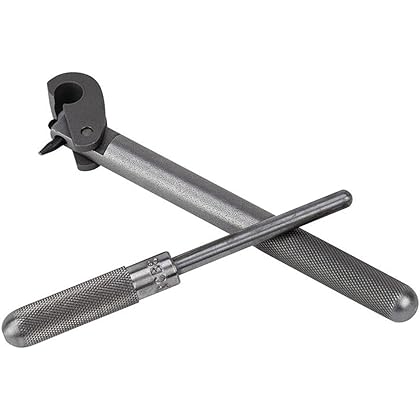Are you tired of struggling to remove the caps from your electronic components? Do you want a tool that can make the process fast and easy? Look no further than the decapping tool. This essential tool is a must-have for any serious DIY enthusiast who wants to take their skills to the next level.
In this article, we’ll explore everything you need to know about decapping tools, including what they are, how they work, and why you need one. We’ll also cover some tips and tricks for using your tool effectively and safely. So, let’s get started!
What is a Decapping Tool?
A decapping tool is a specialized tool used to remove the encapsulation material from electronic components such as integrated circuits (ICs), microprocessors, and other similar devices. The encapsulation material is usually made of plastic or ceramic and is designed to protect the component from damage due to environmental factors like moisture, dust, and heat.
The decapping process involves removing the encapsulation material so that the internal circuitry of the component can be accessed. This allows you to perform various tasks such as reverse engineering, troubleshooting, and analysis of the component’s performance.
How Does a Decapping Tool Work?
Decapping tools come in different shapes and sizes depending on the type of component you’re working with. However, they all work on the same basic principle – applying heat and/or chemicals to dissolve or soften the encapsulation material so that it can be removed.
Some decapping tools use heat alone, while others use chemicals like nitric acid or sulfuric acid. Heat-based decapping tools typically use a hot plate or a heat gun to apply heat to the component. Chemical-based decapping tools use a special container filled with acid that is placed over the component.
Regardless of the type of decapping tool you use, it’s essential to follow the manufacturer’s instructions carefully and take all necessary safety precautions. Decapping tools can be dangerous if used improperly, so always wear protective gear like gloves and goggles.
Why Do You Need a Decapping Tool?
If you’re a DIY enthusiast who enjoys tinkering with electronic components, a decapping tool is an essential tool to have in your arsenal. Here are some reasons why:
1. Reverse Engineering – If you want to understand how a particular component works, you need to access its internal circuitry. Decapping tools allow you to do this by removing the encapsulation material.
2. Troubleshooting – Sometimes, electronic components fail for no apparent reason. Decapping tools allow you to examine the internal circuitry of the component and identify any faults or defects that may be causing the problem.
3. Analysis – If you’re interested in analyzing the performance of a component, decapping tools can help you do this by allowing you to access its internal circuitry.
Tips and Tricks for Using Your Decapping Tool
Here are some tips and tricks for using your decapping tool effectively and safely:
1. Always follow the manufacturer’s instructions carefully and take all necessary safety precautions.
2. Wear protective gear like gloves and goggles when using a decapping tool.
3. Use heat-based decapping tools only on components that can withstand heat without damage.
4. Use chemical-based decapping tools only in a well-ventilated area with proper fume extraction equipment.
5. Avoid inhaling fumes from chemicals used in the decapping process.
6. Use a microscope or magnifying glass to examine the exposed circuitry of the component.
7. Always handle electronic components with care to avoid damaging them during the decapping process.
Conclusion
In summary, a decapping tool is an essential tool for any serious DIY enthusiast who wants to take their skills to the next level. These specialized tools allow you to remove the encapsulation material from electronic components, making it possible to access their internal circuitry.
If you’re interested in reverse engineering, troubleshooting, or analyzing electronic components, a decapping tool is a must-have tool in your arsenal. However, it’s important to follow the manufacturer’s instructions carefully and take all necessary safety precautions when using these tools.
So, what are you waiting for? Get yourself a decapping tool today and take your DIY skills to the next level!
References:
1. https://en.wikipedia.org/wiki/Decapsulation_(electronics)
2. https://www.electronics-notes.com/articles/test-methods/ic-testing-decapping.php
3. https://www.tek-tronics.com/blog/decapping-tools-what-they-are-and-how-they-work
4. https://www.eetimes.com/understanding-the-art-of-decapping/
5. https://www.allaboutcircuits.com/news/how-to-decap-a-chip-for-reverse-engineering-purposes/




